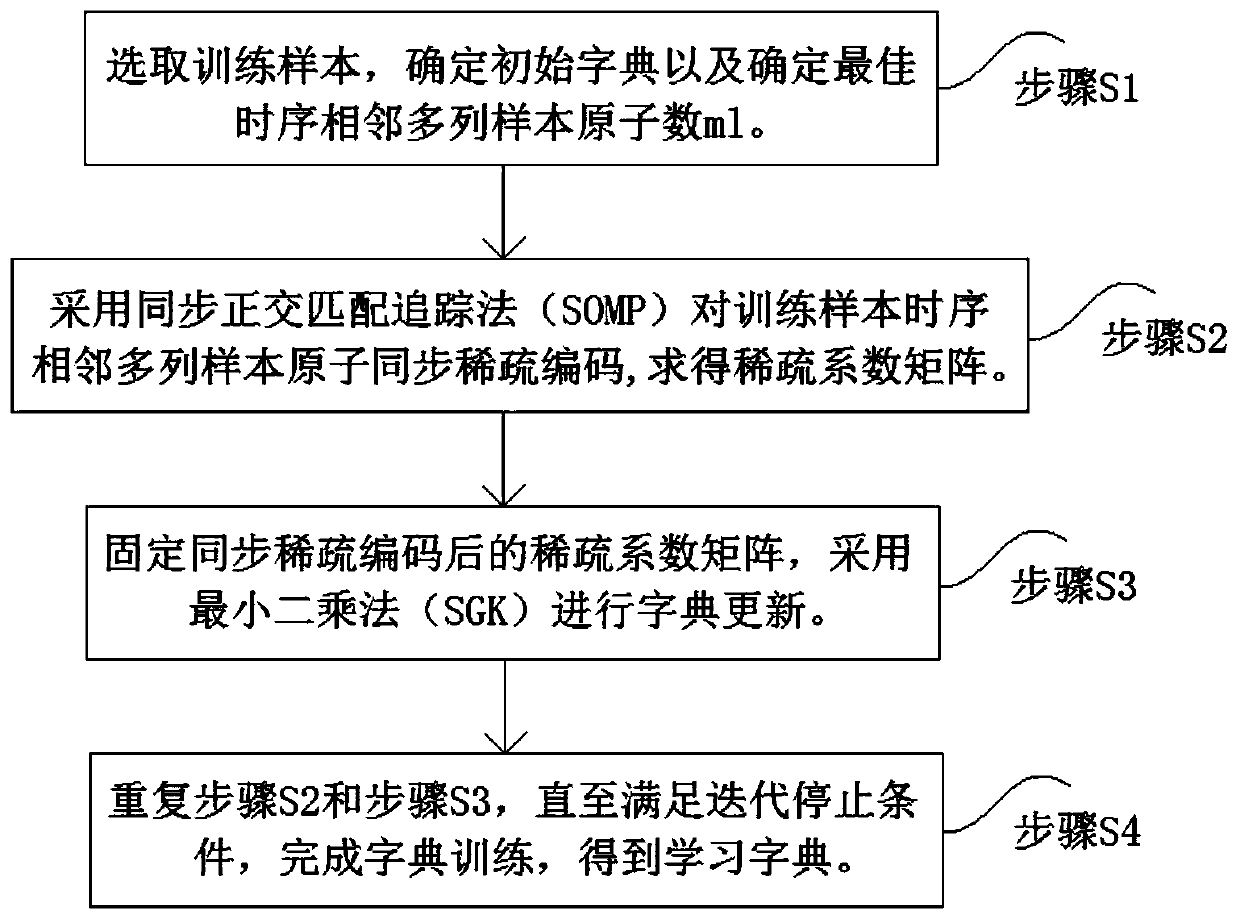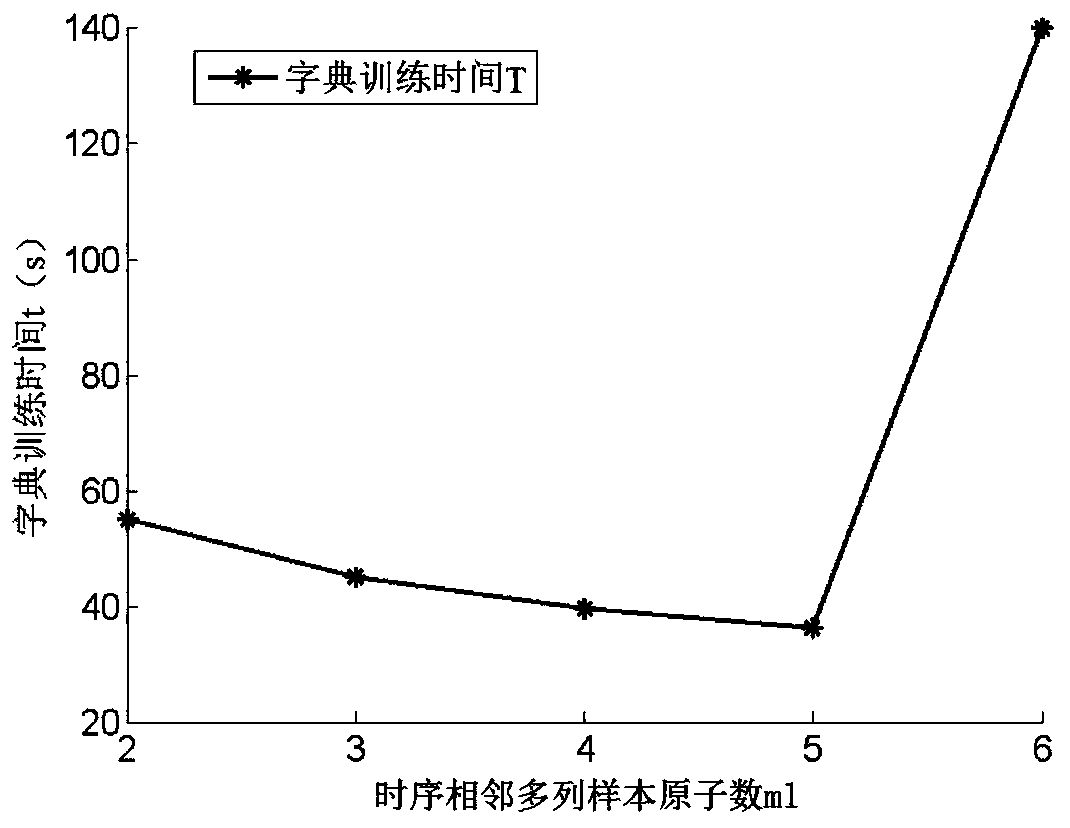Rapid dictionary learning algorithm for sparse representation of mechanical vibration signals
A technology of dictionary learning and mechanical vibration, which is applied in computing, computer parts, character and pattern recognition, etc., can solve the problem of long dictionary training time and achieve the effect of improving the dictionary training speed
- Summary
- Abstract
- Description
- Claims
- Application Information
AI Technical Summary
Problems solved by technology
Method used
Image
Examples
Embodiment Construction
[0037] to combine figure 1 As shown, when adopting the method of the present invention to carry out the dictionary training of mechanical vibration signal sparse representation, specifically comprise the following steps:
[0038] Step S1, select training samples, determine the initial dictionary and determine the number of atoms ml of the optimal time series adjacent multi-column samples.
[0039] Among them, by selecting the existing mechanical vibration signal as the training sample X=[x 1 ,x 2 ,...,x N ],x i ∈R n×1 , and randomly select K columns of atoms in the training sample as the initial dictionary D=[d 1 , d 2 ,... d k],d i ∈ R n×1 .
[0040] combine figure 2 As shown, the specific steps to determine the number of atoms ml of the optimal sequence of adjacent multi-column samples are:
[0041] Step T1, using the over-complete dictionary training time under different time-series adjacent multi-column sample atomic numbers and the compression reconstruction ...
PUM
 Login to View More
Login to View More Abstract
Description
Claims
Application Information
 Login to View More
Login to View More - R&D
- Intellectual Property
- Life Sciences
- Materials
- Tech Scout
- Unparalleled Data Quality
- Higher Quality Content
- 60% Fewer Hallucinations
Browse by: Latest US Patents, China's latest patents, Technical Efficacy Thesaurus, Application Domain, Technology Topic, Popular Technical Reports.
© 2025 PatSnap. All rights reserved.Legal|Privacy policy|Modern Slavery Act Transparency Statement|Sitemap|About US| Contact US: help@patsnap.com



